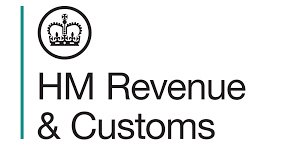HMRC SDLT: Understanding SDLT Higher Rates: Definition and Treatment of Multiple Dwellings
Understanding SDLT Higher Rates for Additional Dwellings
Determining the number of dwellings in a property purchase is crucial for Stamp Duty Land Tax (SDLT) purposes, especially when considering higher rates for additional dwellings. A dwelling is defined as a self-contained part of a building where residents can live independently. In some cases, multiple dwellings in a purchase may be treated as a single dwelling if certain conditions are met, such as when subsidiary dwellings are involved. These rules affect whether higher rates apply and how reliefs like Multiple Dwellings Relief can be claimed.
- A dwelling is self-contained if residents can live independently, with private access and facilities.
- Subsidiary dwellings must be within the same building or grounds as the principal dwelling.
- The principal dwelling must account for at least two-thirds of the total transaction value.
- If only subsidiary dwellings are purchased with a principal dwelling, higher rates may not apply.
- Rules for subsidiary dwellings do not apply if they are not purchased in the same transaction.
- Multiple Dwellings Relief can be claimed even if subsidiary dwellings are involved.
“`

Read the original guidance here:
HMRC SDLT: Understanding SDLT Higher Rates: Definition and Treatment of Multiple Dwellings
Understanding Dwellings for SDLT: SDLTM09755 – Higher Rates for Additional Dwellings
Definition of a Dwelling
In some cases, it is vital to determine if a property purchase consists of one or multiple dwellings. This distinction is based on factual circumstances.
What Makes a Dwelling?
A part of a building is considered a separate dwelling if its residents can live independently from others in the same building. This means:
– The part must have its own entrance.
– It should include essential facilities like a kitchen and bathroom.
– There needs to be enough privacy and security for the residents.
For further clarification on the rules and considerations HMRC uses to identify how many dwellings are involved in a purchase, you can refer to SDLTM00410 – SDLTM00430.
Subsidiary Dwellings Explained
At times, when purchasing several dwellings, the transaction can be treated as if only one dwelling was bought for the purpose of calculating higher rates. This situation occurs when almost all the properties are classified as subsidiary dwellings.
What is a Subsidiary Dwelling?
A subsidiary dwelling must meet specific criteria:
– It has to be located either within the same building as another purchased dwelling or on the same grounds.
– The principal dwelling must be valued at a minimum of two-thirds of the total combined value of the principal and subsidiary dwellings. This total includes all associated gardens and grounds.
Example of a Principal and Subsidiary Dwelling
Let’s say you purchase a house valued at £300,000 (the principal dwelling) and you also acquire a flat in the garden valued at £150,000 (the subsidiary dwelling). The total purchase price is £450,000. In this scenario:
– The principal dwelling’s value (£300,000) is two-thirds of the total value (£450,000), so the transaction can be treated as one for SDLT purposes.
Multiple Subsidiary Dwellings
You can buy more than one subsidiary dwelling alongside a principal dwelling. However, the principal dwelling must still represent at least two-thirds of the overall value.
Special Cases Involving Higher Rates
If you purchase a principal dwelling and all other properties are subsidiary dwellings:
– The tests to determine whether higher rates apply will treat the entire transaction as if it involves only one dwelling.
– If the principal dwelling is your first property or serves as a replacement for your main residence, then the higher rates will not apply.
Transactions Not Covered by Subsidiary Dwelling Rules
If you purchase the principal and subsidiary dwellings in separate transactions, the subsidiary dwelling rules do not apply. This is true even if the purchases are related.
Multiple Dwellings Relief
You may still qualify for multiple dwellings relief even when your purchase includes separate dwellings, including one or more that are classified as subsidiary.
Example of Multiple Dwellings Relief
Imagine you buy two separate flats valued at £200,000 each. While both flats are recognised as separate dwellings, you can still claim multiple dwellings relief, potentially lowering the amount of stamp duty you owe.
Factors Considered in Determining Dwellings
When HMRC looks into whether a property includes one or multiple dwellings, several factors come into play. Here are some key elements they evaluate:
Degree of Independence
– Each dwelling must have its own living amenities: This includes private bathrooms, kitchens, and entrances.
– There should be a clear separation that allows each dwelling to function without needing to rely on shared spaces or facilities from other parts of the building.
Privacy and Security
– The residents need to feel secure and have sufficient privacy. If an area is too open or lacks privacy features, it might not qualify as a separate dwelling.
Community of Use
– If multiple parts of a building are used as a single accommodation (like a single family residence), HMRC may consider it a single dwelling.
Important Links for Further Information
For more detailed guidelines, you can refer to the following links which provide comprehensive information about SDLT and the treatment of dwellings:
– SDLTM00410 – SDLTM00430: Factors determining dwellings
– SDLTM09755 – SDLT – higher rates for additional dwellings: Meaning of dwelling – further information
Summary of Key Principles
When assessing how many dwellings are involved in a property purchase, several important principles guide the evaluation:
– A self-contained part of a building can be classified as a separate dwelling based on its independence and facilities.
– Higher Rates for Additional Dwellings apply under certain conditions, particularly when a principal dwelling is purchased alongside one or more subsidiary dwellings.
To clarify these points, it’s essential to consult the provided resources and perhaps speak to a tax adviser for specific scenarios, especially when purchasing multiple properties.








